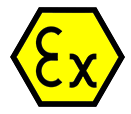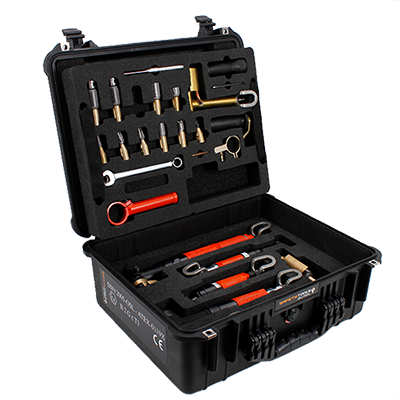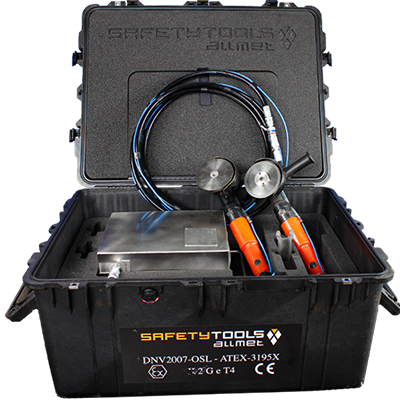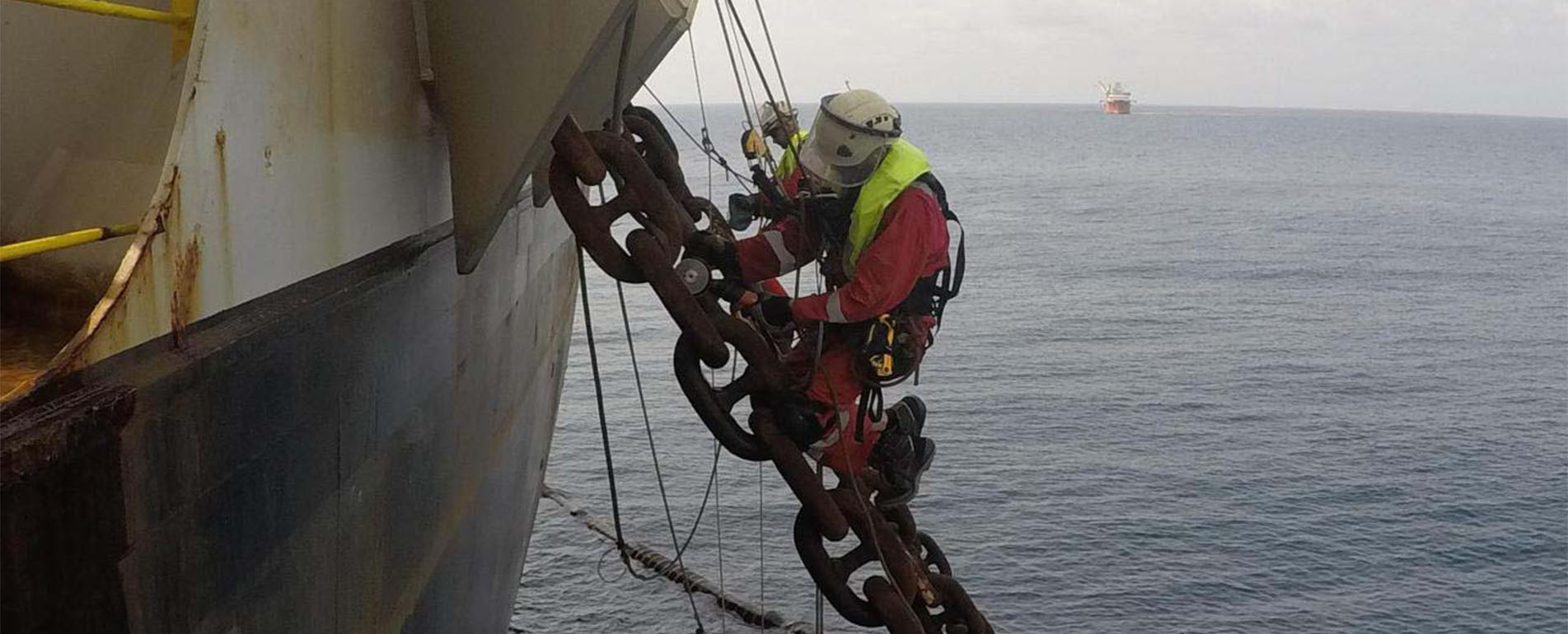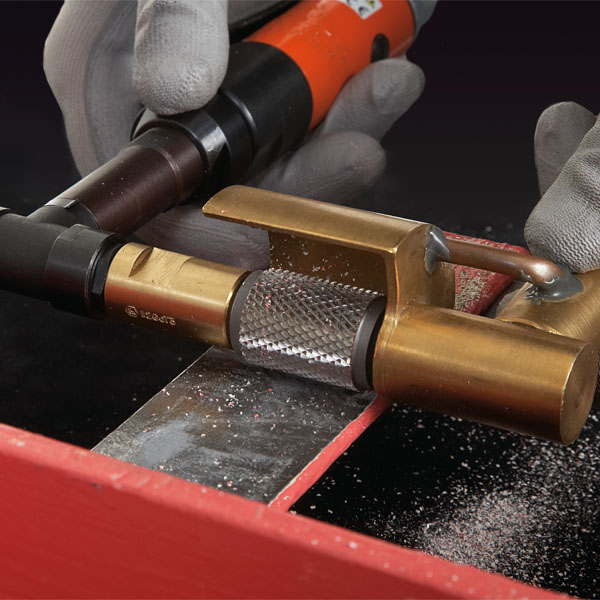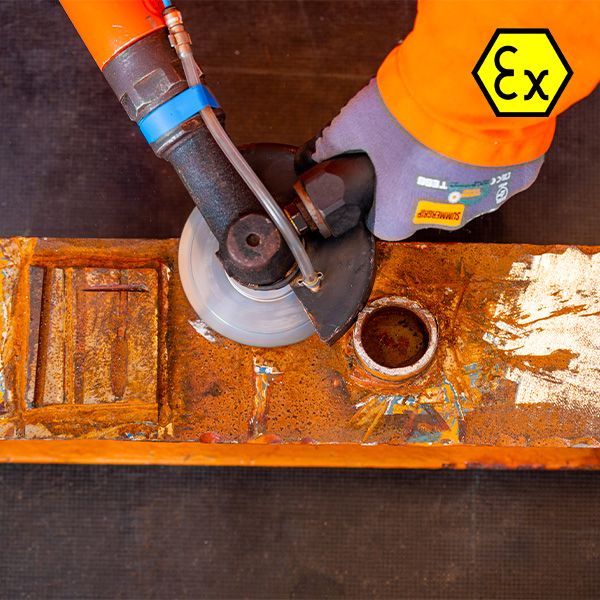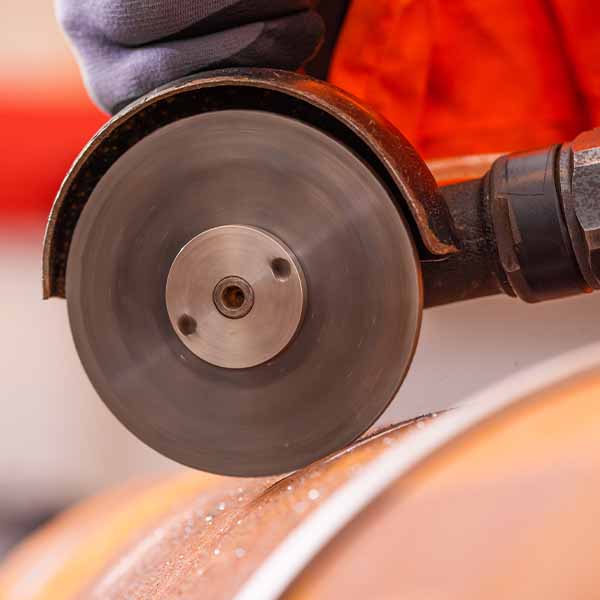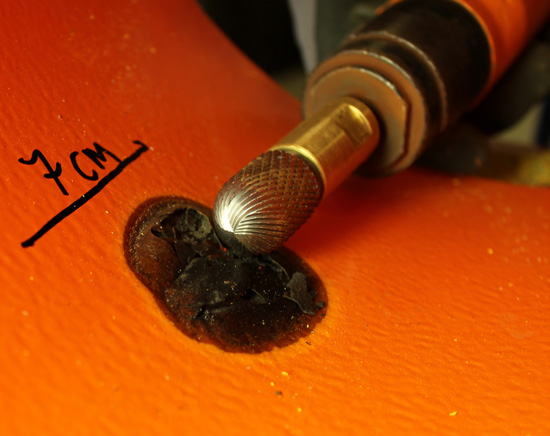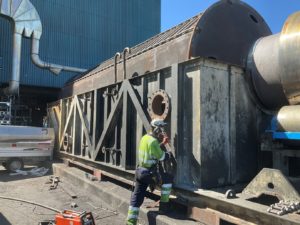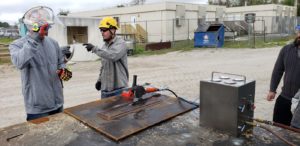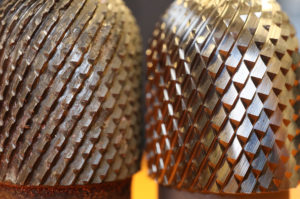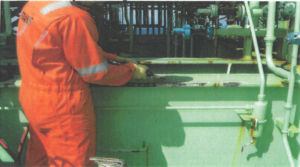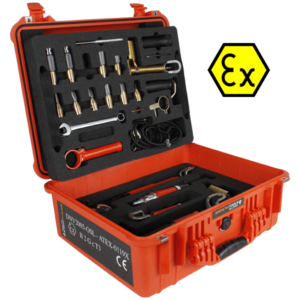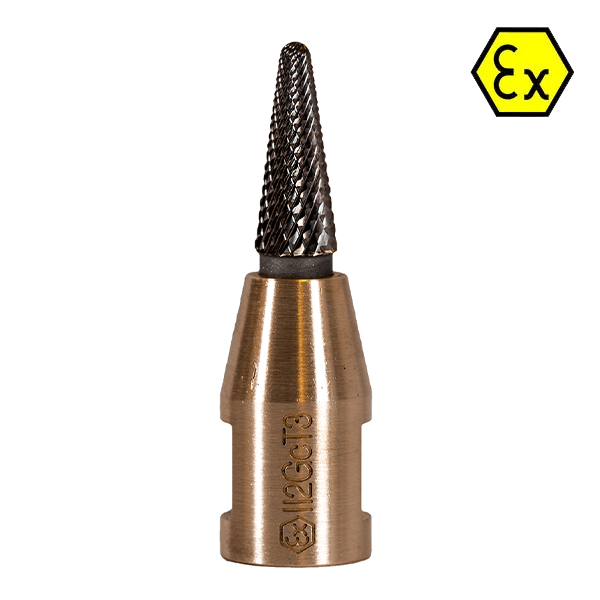Introduction to Cold Work and Spot Repair options
Cold work is defined by tools that do not generate high heat. Spot repair involves removing damaged or deteriorated parts of the coating and the associated contamination, followed by replacement with a new coating. This helps to extend the life of the coating system with minimal intervention.
Spot repair maintenance on coatings is a constant process. It is necessary to ensure the coating system is performing optimally and protecting the underlying asset substrate.
Read more about spot repair: Do conventional grinding discs hurt more than they heal?
Cold work tools – Micron (μm )
The wolfram-head of Safety Tools cold work grinding files have different teeth to produce a different surface profile. μm (Micron) In steel and other material. Knowing the tool’s surface profile, it is easier to plan the best paint/material to choose for repair.
An example is a case study from Perspect↵, Leakage of air line.
We see that by knowing on forehand that the Little Papa grinding file has an average surface profile of 83 μm. They knew that this was exactly what was needed for the repaired product.
Surface profile
Not everything is about the surface profile. Surface cleanliness also matters.
They are, in fact, very independent of each other. So in effect, you could have a high surface cleanliness standard. Say, ISO Sa3 with a shallow surface profile of 25 μm. And the reverse is possible as well. A lower surface cleanliness standard of ISO Sa2 with a high surface profile of over 120 μm is possible.
As regards Surface Profile, steel surfaces are being prepared for shop primer, for example. It needs careful consideration of the surface profile being achieved. As well as the abrasive used to achieve it. The incorrect specification could lead to premature failure.
If you want to read more about the subject: Surface Cleanliness vs. Surface Profile.
Commonly used methods
Commonly used methods in the industry include Abrasive blasting – Wet/Dry, Chemical Etching, and Power tools. If the project is being done in situ and does not allow Hot work, it narrows your options considerably.
Cold work – Surface preparation tools
Ex-certified cold work surface preparation tools from Safety Tools Allmet will give a good clean surface with a profile meeting the SSPC-SP11 Surface Preparation Standard requirements. This standard is suitable where a roughened, clean, bare metal surface free of all visible oil, grease, dirt, rust, coating, oxides, mill scale, corrosion products, and other foreign matter is required but where abrasive blasting is not feasible or permissible. Lastly, the peaks and valleys on the prepared surface need to form a continuous pattern with no smooth, unprofiled areas.
The example shown is the 2023 Spark-Free Grinding Kit (Limited Edition)
Save time by eliminating demanding risk assessments and costs related to shutdowns, fireguards, hot work permits, habitats, and demanding cleanup work. This kit contains everything you will ever need for surface treatment. The air tools, grinding files, and grinding discs are Ex-certified as safe to use in ATEX gas zones 1 and 2 and ATEX dust zones 21 and 22.
Rotating files and discs
Safety Tools Allmet files and discs are made of tungsten carbide. The teeth’ hardness and design increase the lifetime of files and discs significantly. The fragments produced after grinding with Safety Tools Allmet are easy to clean, large, and blunt. This offers many safety and operational benefits compared to conventional tools.
Spot size and our spot size standard
The size of the spot areas can be vastly different from each other. When discussing spot repair, we often size them as 5x5cm areas.
The reasoning is that we can easily show the estimated lifetime of our grinding tools.
Take, for example, our A-0001 grinding file. This grinding file has an estimated lifetime of 8000 spots, 8000 – 5x5cm spots with an average of 76 μm surface profile.
Spot calculator and price per spot
Calculator for finding the price for one spot (5x5cm). This tool can help you compare prices and offers to find the best one for your job.
When calculating the price per spot, we use the following formula:
Cost per spot = Rotating file + air tool / Number of spots rotating file repairs

